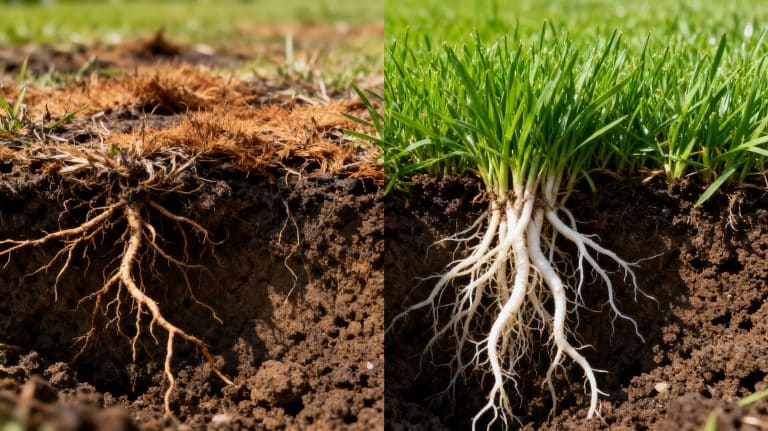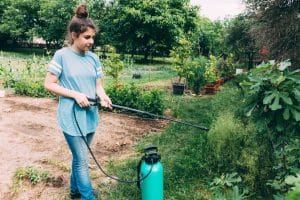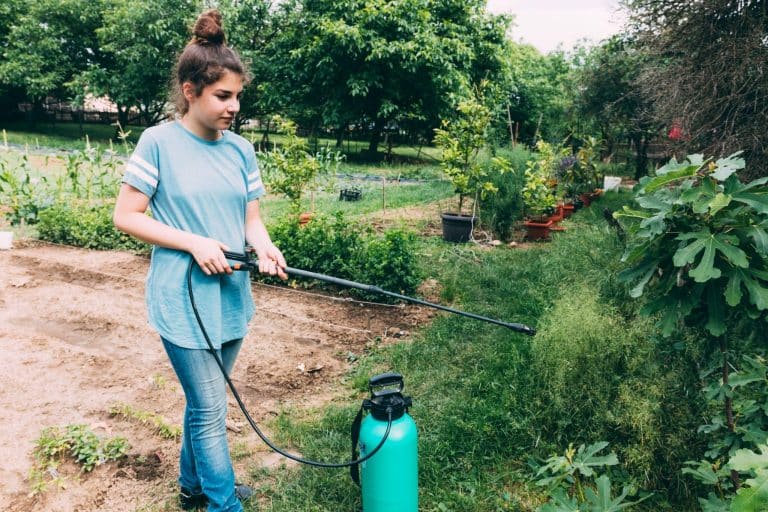The same patch lights up every year maybe a crescent on 18 or a ragged stripe along midfield no matter how you adjust your spray schedule. That repeat isn’t the calendar talking. It’s conditions repeating, especially long leaf wetness stacked on plant stress. If you keep treating dates, you pour budget into short lived relief while your turf thins and play shuts down.
You’re not behind. Small changes now still move the needle.
At 6:15 a.m., your shoes are slick with dew and the same hollow stays greasy while the ridge dries.
Wet Leaves Drive Disease: Not Your Calendar
Recurring outbreaks aren’t a spray interval problem they’re a conditions problem centered on leaf wetness duration plus stress from compaction, thatch, shade, and mistimed nitrogen. That’s the disease triangle made practical: susceptible turf + favorable environment + an active pathogen. Break the environment and the pattern breaks. In most programs, the biggest lever is shortening wet leaf hours overnight while easing plant stress so the host isn’t an easy target.
Why it hits the same spots
Leaf wetness drives most fungal infections. Evening irrigation adds hours to dew, shaded canopies slow dry off, thatch holds a moist, warm layer at the crown, and compaction keeps water at the surface. Stack a nitrogen flush on top and you’ve built the perfect infection window. The pathogen is opportunistic. The environment is predictive. This is why “calendar spraying” feels necessary because the conditions recur on the calendar. Shift conditions, and you shift the outcome.
5 Tests to Find Your Outbreak Trigger
Try these simple checks this week. Each links to a direct action.
Dew Mapping: Your 10-Minute Test
- Test: Walk your route at first light. Pin flag where dew lingers 60-90 minutes longer than surrounding turf.
- If positive: Shift irrigation to 4-6 a.m., not evening. Reduce runtimes on flagged heads first. You should see dew burn off earlier within two mornings and less morning mycelium (fungal growth) where it lingered.
Compaction Check: 5 Minutes
- Test: Push a screwdriver or penetrometer (soil resistance probe) at 3-4 spots. Hard refusal at 2-3 inches signals compaction.
- If positive: Schedule core aeration in the next recovery window for those zones first. Expect firmer footing and faster surface dry down within a week after recovery.
Thatch check (2 minutes)
- Test: Slice a small wedge; measure thatch. Over roughly 0.5 inch on most intensively managed turf holds moisture and inoculum.
- If positive: Plan light, frequent verticutting/scarification when growth allows. You’ll know it’s helping when water moves into the profile instead of beading on top.
Nitrogen timing sanity check (look back 4-6 weeks)
- Test: Did a heavy N app precede the outbreak window? Lush, soft growth gets hit hardest.
- If yes: Shift to spoon feeding or slow release outside high risk humidity/heat periods. Within 7 days, you should see steadier growth and fewer tender leaf tips.
Fast disambiguation (disease vs. abiotic stress)
- Morning white, cottony mycelium that vanishes by 10 a.m. are classic fungal disease symptoms. Mid day wilt that recovers overnight points to water distribution issues. Treat the right problem.
- Dew map and log.
- If dew-positive, shift irrigation and recheck in 48 hrs.
- If compaction-positive, prioritize aeration in next window.
- If thatch-positive, schedule light verticut.
- If nitrogen-timing issue, switch to spoons/slow release.
- Then go to 3-Phase Fix.
Next: Use positive test results to choose actions in 3-Phase Fix.
3-Phase Fix: This Week to Next Season
Free Fixes You Can Start Tonight
Immediate step: if it’s after 6 p.m., bump tonight’s irrigation to pre‑dawn and note which areas stay wet longest we’ll use those notes in the ‘5 Tests’ below (see 5 Tests to Find Your Outbreak Trigger below).
- Move irrigation to pre‑dawn. Water deep and less often. Pair with cycle and soak on tight soils to avoid runoff and surface wetness.
- Raise mowing height 0.125-0.25 inch where possible. Never remove more than one third. You’ll see less scalping and fewer “open wounds” for infection within 48 hours.
- Pause high N during peak risk windows. Favor slow release or light spoons after the window passes.
- Sanitize reels/bedknives between infected and clean areas to avoid mechanical spread.
Next Recovery Window Actions
- Core aerate compacted lanes and high traffic zones. Topdress to keep channels open.
- Verticut/scarify to manage thatch to species appropriate thresholds. Schedule when turf can recover quickly.
- Prune lift limbs and thin dense edges to speed morning dry off.
Season-End Structural Changes
- Add subsurface drainage to chronic wet spots where surface fixes fail.
- Renovate to disease tolerant cultivars verified in regional NTEP (National Turfgrass Evaluation Program) data. Use blends to diversify resistance.
- Consider soil moisture sensing to trigger irrigation by need, not habit.
Success Signs: 24 Hours to 2 Weeks
Results Timeline: Hours to Weeks
- Within 24-48 hours: Dew disappears 45-90 minutes earlier in previously wet pockets. Morning mycelium shrinks or vanishes on those routes.
- By day 5-7: Leaf tips look less succulent. Mowing quality improves with fewer scalp marks. Disease expansion slows or stalls.
- By days 10-14: Recovery fills in thinned areas. Fewer new lesions appear despite similar weather proof that conditions, not the calendar, are changing the outcome.
Choice Set Intro: FRAC code (fungicide mode‑of‑action group) appears on labels; rotating different FRAC groups helps prevent resistance.
Quick ID and risk windows: Use your regional extension guides to identify your recurring disease and note the temperature/humidity patterns that define its high‑risk window.
Example: If your 5-10 day forecast matches a high‑risk window for your recurring disease, plan a preventive application and choose a FRAC group different from your last application.
When to Spray: Your 3-Level Decision Guide
Use fungicides strategically against conditions not the calendar.
Spray Yes: 3 Conditions Met
- You have a 5-10 day forecast in the high risk window for your recurring disease, plus
- Historical recurrence in specific zones, plus
- You cannot change conditions fast enough (shade, event schedule, or heat burst).
- Action: Apply preventively at labeled preventive rates, just ahead of the window. Rotate by FRAC code (fungicide mode‑of‑action group). Expect longer intervals and better control than chasing symptoms.
Spray Maybe: Borderline Risk
- Conditions are borderline and cultural changes are underway.
- Action: Spot treat high risk zones only. Reassess after the weather window.
Skip Spray: Low Risk Window
- Conditions are unfavorable for the pathogen and your leaf wetness window is shortened.
- Action: Skip the pass and document why. Don’t select for resistance when risk is low.
Cut Fungicide Costs 20-40%: The Script
Reactive cycles are expensive because they repeat. Cultural fixes cost up front but pay you every week they shorten wetness and reduce stress. Frame it in totals, not line items: fewer apps, less emergency labor, fewer closures, better play. A practical script: “We can cut fungicide passes in the hot zone by 20-40% if we move irrigation, lighten N during risk windows, and aerate the compacted lanes. Those cultural investments break even in one to two seasons and keep play open.”
Your 4-Step Action Plan: Tonight to Next Year
- Tonight: Shift irrigation to pre‑dawn. Cut evening cycles.
- This week: Map dew persistence. Raise HOC (height of cut) slightly. Pause heavy N. Sanitize equipment.
- Next window: Aerate compacted lanes. Verticut to target thatch. Prune for airflow.
- Before next season: Review outbreak maps, weather logs, and costs. Update cultivars and drainage where the maps point.
Stop Chasing Dates: Follow Conditions
Annual outbreaks aren’t about the calendar they’re about conditions. Keep the habit of good records, but stop chasing dates. When your program follows conditions, your turf stops reliving last year’s problems. And your stakeholders will see the difference where it counts: on the surface.















